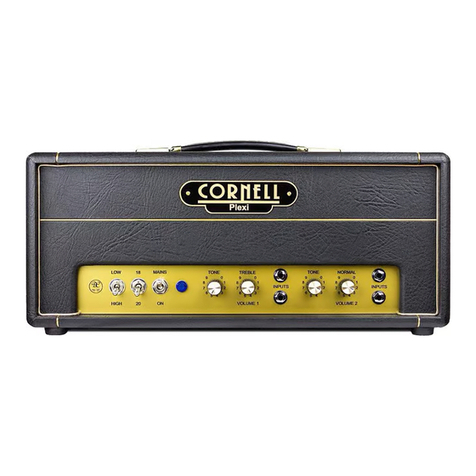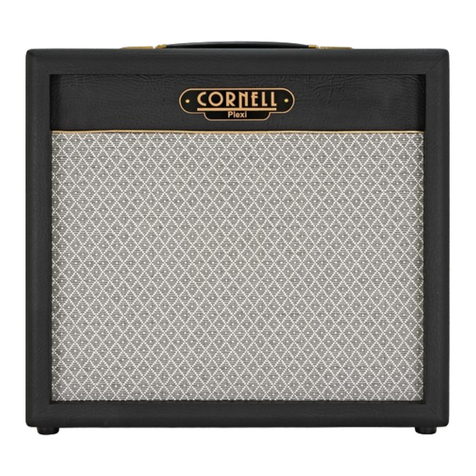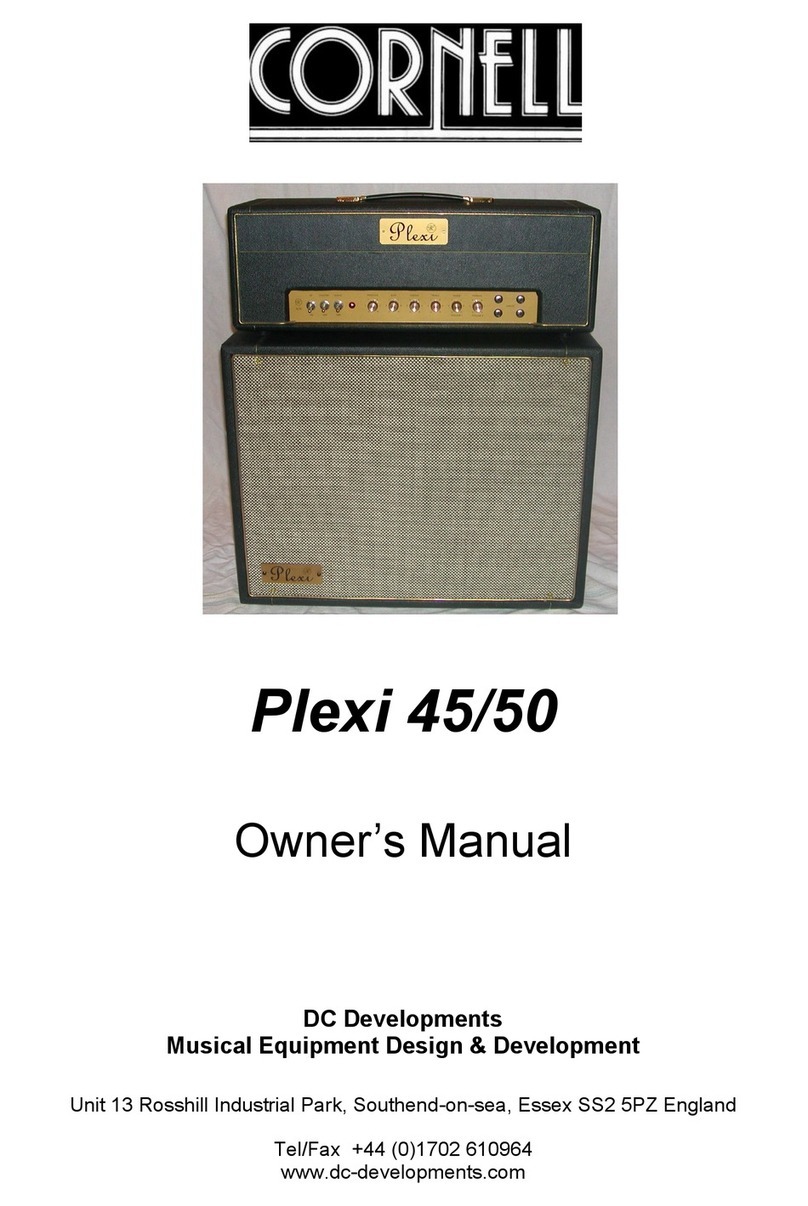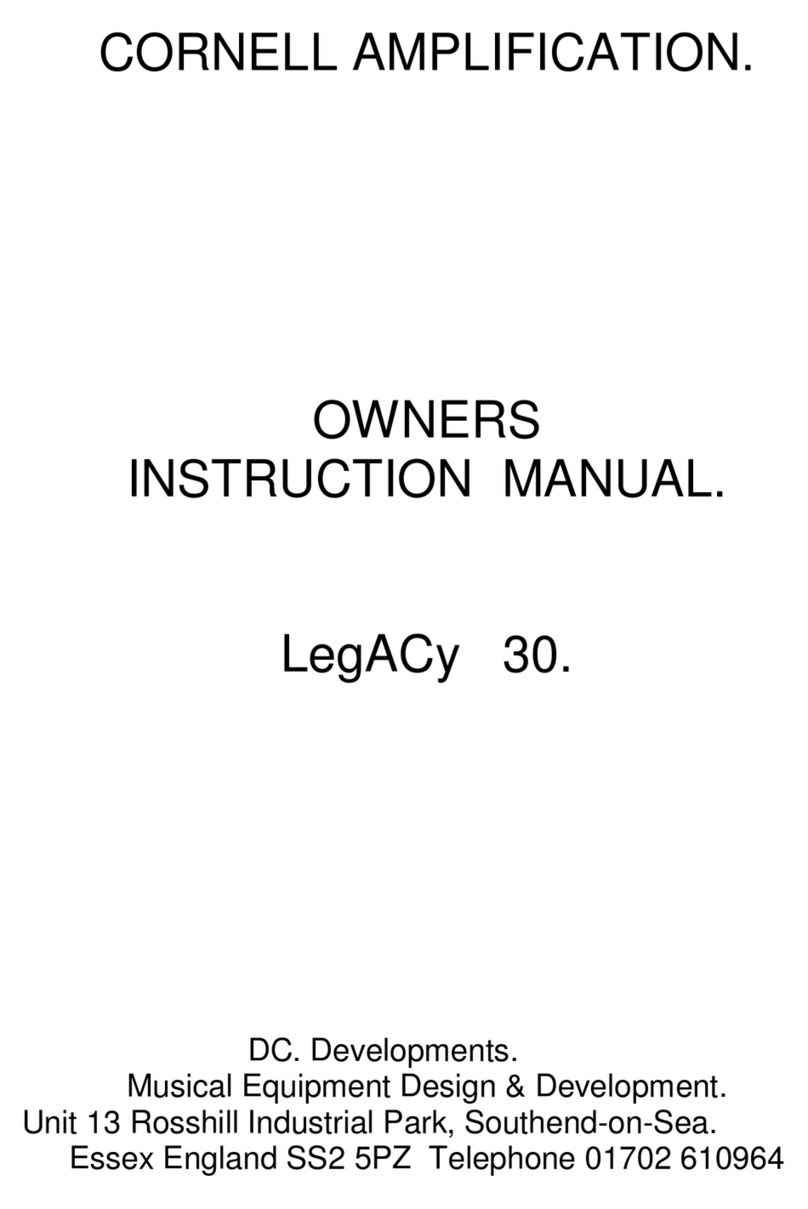© 1995-2007 CORNELL Musical Equipment Design & Development 4
Construction and Design
Virtually all modern amplifiers are built using printed circuit boards, which helps to
speed up production and keep down costs. There is, however, one major draw-
back with printed circuits - conductor tracks that connect components together often
run very close to one another, creating a small capacitance. The result of this in a
guitar amplifier is a substantial loss in both high frequency response and harmonic
richness.
Cornell amplifiers are designed to avoid this by having point-to-point wiring through-
out. Components are mounted onto a specially designed component board which
is then sealed, using a conformal coating to prevent noise and the reduction of
component life caused by moisture penetration.
The hand wiring, carried out by our highly-trained staff, takes time but ensures that
each of our amplifiers performs to the highest standards of reliability and sound.
The stainless steel chassis holds our specially-designed transformers, and chassis-
mounted (rather than circuit-board mounted) valves (tubes).
Such attention to detail ensures a very close reproduction of the full harmonic
spectrum of your guitar’s pickups, resulting in a pure, natural sound that will turn
heads at any venue and/or that records superbly.
The Pre-amplifier
The Plexi 18/20 is designed to be simple in use, and yet produce the quality of
sounds that the musician of today expects from a professional amplifier.
There are two independent channels, each having its own volume control which
controls the overall loudness of the amplifier. The tone controls are designed to
work over the entire frequency range of your guitar, allowing increased amounts of
low and high frequency adjustment.
Channel Two has a brighter tone than that of that of Channel One.
The Output Stage
The Plexi 18/20 amplifier has Class A output design, achieved by means of fixed
bias resistors. The resistance values are selected to complement exactly the char-
acteristics of the output valve. Cathode bias resistors help to stabilise current flow
throughout the lifetime of the valve. The voltage across each bias resistor will vary
with the valve’s characteristics. When these voltages are equal, each valve is
drawing the same amount of current and the valve set is ‘matched’, resulting in
maximum output and long life.

































